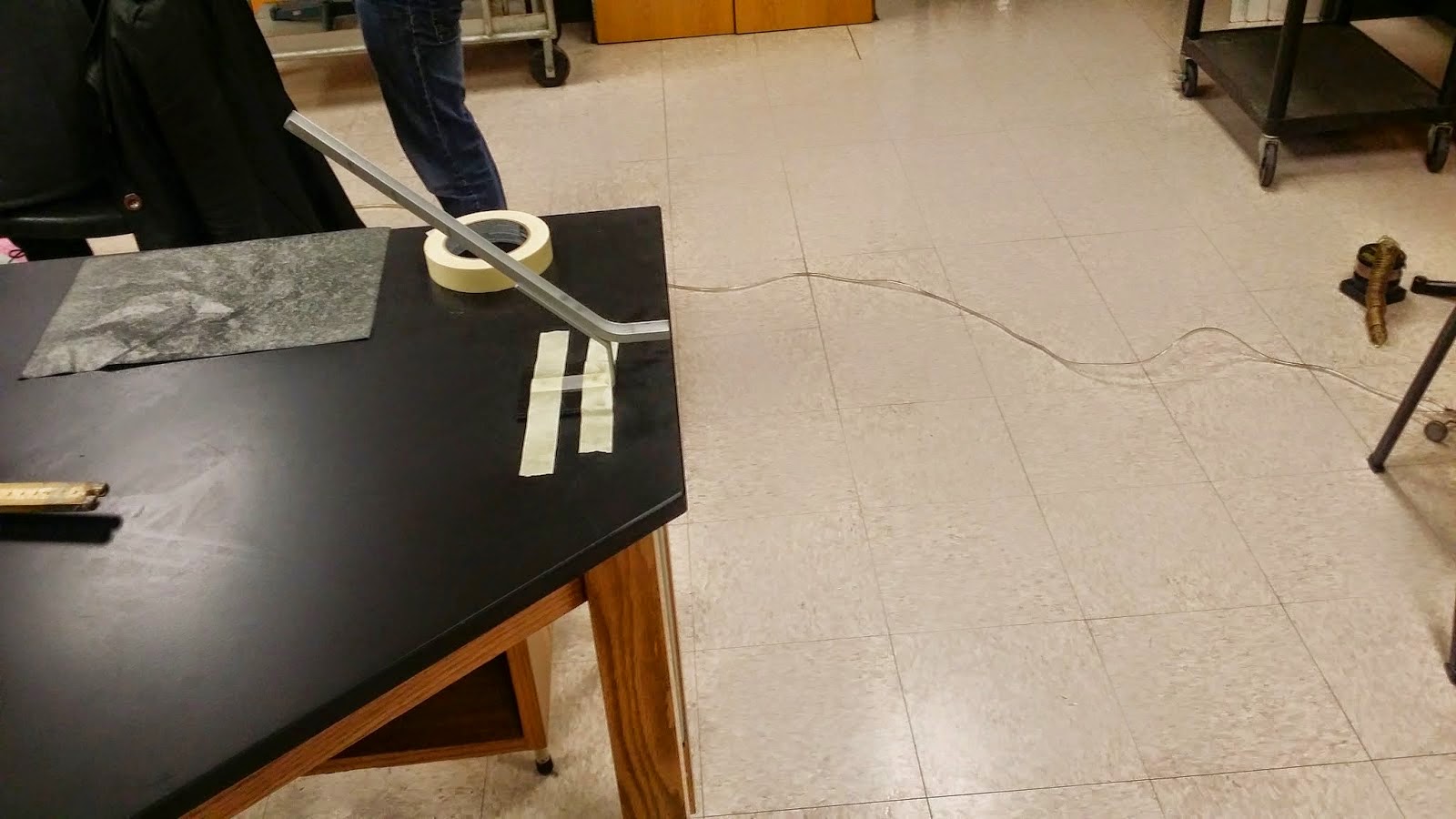In this lab, we are going to measure the error that we get when we measure things.
For this lab, I had three identical cylinders. One was made of bronze, one silver, and one gold.
Because the scale could measure to a minimum of .1 grams, that is the propagated uncertainty for these three items
The density of bronze is supposedly 9.29.
However my calculations make it 9.69 cm^3 + or - .1 grams
My calculation of the density silver was 3.54 cm^3 + or - .1which was severely wrong
as the density of silver should be 10.49
My calculation of gold is also extremely wrong as i received 10.86 cm^3 + or - .1 compared to 19.3
Using the equation on the bottom part of the image I get
silver: dP/p = .015%
bronze: dP/p = .016%
gold: dP/p = .016%
In the second part of the lab we have to find propagated uncertainty of a unknown mass
For this system the equation looks like
Fy= mg- F1sin(x) - F2sin(y)
Fx=F1sin(x) = F2sin(y)
F1=3.5-4.5 N
F2 = 2.7-3.7 N
x = 47-49 deg
y = 37-39 deg
By using the y side of the equation we can move over mg
mg= F1sin(x) + F2sin(y)
to get m we then divide by g
m = (F1sin(x) - F2sin(y))/g
m = .505 + or - .015 N
For the first part of the experiment I must have accidentally used to wrong equation for silver and gold. I remember that I had to redo my calculations and was still redoing it while class was over. Unfortunately, I could not find the new sheet and just stuck with my old data. Besides the experimental densities being wrong, I think the rest of my lab is correct.




















































